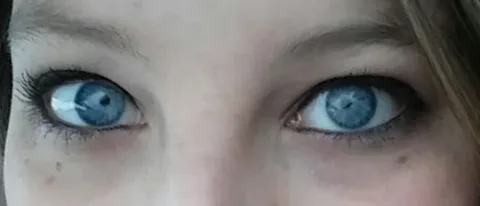Changes in pupil size can reveal a lot about what’s happening inside the body. One of the most common causes of pinpoint or constricted pupils is the use of opioids and narcotics. These substances directly influence how the pupils react to light and brain signals. Understanding this connection can help you spot signs of drug use or recognize medical issues requiring attention.
What Are Constricted Pupils?
Before diving into how drugs affect pupil size, it’s essential to understand what constricted pupils are. A constricted pupil is a condition where the black center of the eye (the pupil) becomes unusually small, even in low-light conditions. This can be a natural response to bright light, but it may also be triggered by certain medications, toxins, or neurological problems.
Many people ask, What causes constricted pupils?—and one of the leading answers is opioid use.
How Opioids Work in the Body
Opioids are powerful pain-relieving medications that work by attaching to specific receptors in the brain and spinal cord. These drugs reduce the perception of pain and often induce feelings of euphoria or relaxation. However, they also influence the parasympathetic nervous system, which controls the muscles that regulate pupil size.
When opioids activate certain receptors in the brain, they send signals to the eye muscles to constrict the pupils. This response is so reliable that medical professionals often look at pupil size when checking for opioid overdose or misuse.
Types of Opioids That Constrict Pupils
Various opioids and narcotics can lead to constricted pupils. These include:
- Morphine
- Heroin
- Oxycodone (OxyContin)
- Hydrocodone (Vicodin)
- Fentanyl
- Codeine
All these drugs share the same ability to affect the brain’s control over the pupils. Whether taken legally for pain relief or used illicitly, these substances can cause the classic “pinpoint” pupil response.
The Science Behind Drug-Induced Pupil Constriction
To better answer the question, What causes constricted pupils?, we can look at the neurological pathway involved. When opioids bind to the mu-opioid receptors in the brainstem, they trigger a chain reaction that enhances the parasympathetic response. This response activates the sphincter pupillae muscle, which contracts and shrinks the pupil.
This change is involuntary and immediate. Even low doses of opioids can cause noticeable pupil constriction. In cases of overdose, the pupils can become so tiny that they appear almost invisible.
Other Substances That May Constrict Pupils
While opioids are a major cause, they aren’t the only drugs that lead to pupil constriction. Others include:
- Benzodiazepines
- Barbiturates
- Certain insecticides (organophosphates)
- Pilocarpine (a glaucoma medication)
Still, opioids are most commonly associated with this effect. This is why first responders often check pupil size in suspected overdose cases.
Constricted Pupils as an Overdose Warning Sign
One of the most dangerous outcomes of opioid use is overdose. Recognizing constricted pupils can be a key warning sign. Along with shallow breathing, unconsciousness, and a bluish tint to the skin, tiny pupils often signal that someone has taken a life-threatening dose of opioids.
That’s why one of the first things doctors, EMTs, and nurses ask is, What causes constricted pupils?—especially when a patient is unresponsive or showing signs of respiratory distress.
Reversing the Effects with Naloxone
Naloxone (Narcan) is a medication designed to reverse opioid overdose. It works by kicking the opioid molecules off the brain’s receptors, allowing normal body functions to resume. One of the earliest signs that naloxone is working is the dilation of pupils back to their normal size.
If you’re ever in a situation where someone may be overdosing on opioids, administering naloxone can be life-saving. Observing the change in pupil size is a useful confirmation that the drug is reversing the effects.
Can Pupil Changes Be Permanent?
For most people, pupil constriction from opioids is temporary and lasts only as long as the drug remains active in the system. However, repeated abuse or long-term use can sometimes lead to ongoing changes in how pupils react to light. This may result in delayed dilation, poor night vision, or general eye discomfort.
People recovering from opioid addiction often notice improvements in their eye function over time, especially if no long-term nerve damage occurred.
Final Thoughts
Understanding how opioids and narcotics affect your pupil size is more than just a medical curiosity—it can be a lifesaving observation. From clinical diagnosis to emergency response, constricted pupils are a strong signal of opioid activity in the body.
If you’ve ever wondered, What causes constricted pupils?, remember that opioids are one of the leading contributors. Recognizing this connection can help in identifying drug use, detecting overdose, and providing fast medical care.
Whether you’re a healthcare worker, a caregiver, or simply someone trying to learn more, knowing the link between pupil size and opioid use is crucial. For anyone struggling with addiction, support and treatment are available—and recovery can bring back not just health but also the natural balance in your body’s responses.



